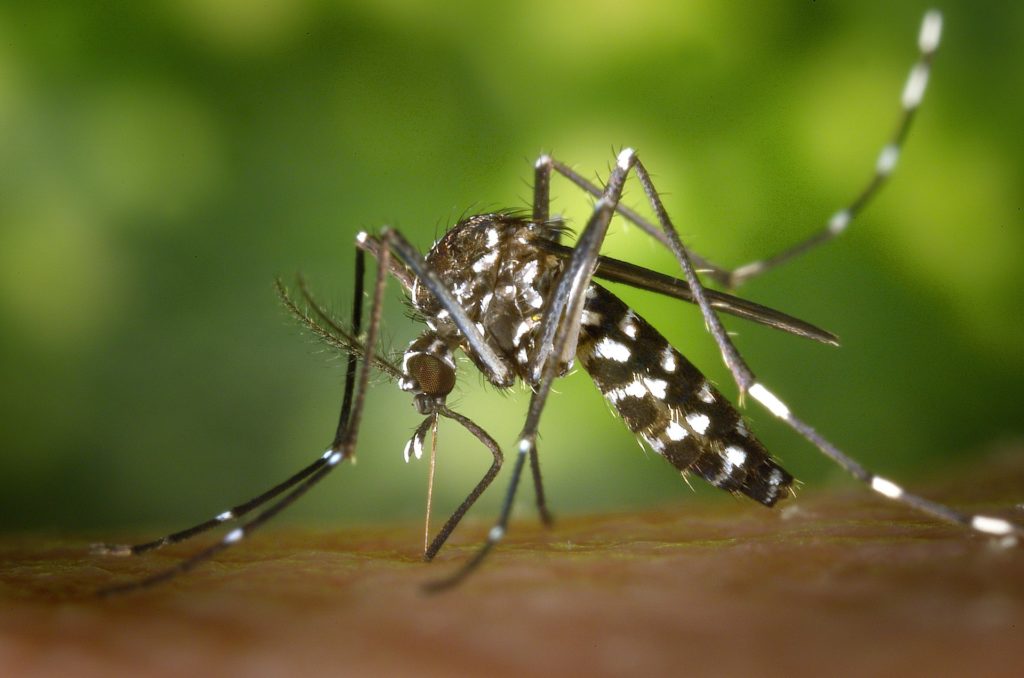$3.9M project on self-deleting genes takes aim at mosquito-borne diseases
Texas A&M AgriLife researchers’ work to aid mosquito control efforts
To control mosquito populations and prevent them from transmitting diseases such as malaria, many researchers are pursuing strategies in mosquito genetic engineering. A new Texas A&M AgriLife Research project aims to enable temporary “test runs” of proposed genetic changes in mosquitoes, after which the changes remove themselves from the mosquitoes’ genetic code.
The project’s first results were published on Dec. 28 in Philosophical Transactions of the Royal Society B, titled “Making gene drive biodegradable.”
Zach Adelman, Ph.D, and Kevin Myles, Ph.D., both professors in the Texas A&M College of Agriculture and Life Sciences Department of Entomology are the principal investigators. Over five years, the team will receive $3.9 million in funding from the National Institute of Allergy and Infectious Diseases to test and fine-tune the self-deleting gene technology.
“People are wary of transgenes spreading in the environment in an uncontrolled manner. We feel that ours is a strategy to potentially prevent that from happening,” Adelman said. “The idea is, can we program a transgene to remove itself? Then, the gene won’t persist in the environment.
“What it really comes down to is, how do you test a gene drive in a real-world scenario?” he added. “What if a problem emerges? We think ours is one possible way to be able to do risk assessment and field testing.”
A crucial target for mosquito control
Many genetic engineering proposals revolve around inserting into mosquitoes a select set of new genes along with a “gene drive.” A gene drive is a genetic component that forces the new genes to spread in the population.
“A number of high-profile publications have talked about using a gene drive to control mosquitoes, either to change them so they can’t transmit malaria parasites anymore, or to kill off all the females so the population dies out,” Adelman said.
An often-voiced worry is that such genetic changes could carry unintended or harmful consequences.
One plan makes the cut
In the project’s first publication, the colleagues describe three ways for an introduced genetic change to remove itself after a designated period of time. The time period could, for instance, be 20 generations of mosquitoes, or about a year. The team modeled how the genes would spread among mosquitoes based on generation times and parameters of an average mosquito’s life. Of the three methods, the team has chosen one to pursue further.
This method takes advantage of a process all animals use to repair damaged DNA, Adelman said. Inside cell nuclei, repair enzymes search for repeated genetic sequences around broken DNA strands. The repair enzymes then delete what’s between the repeats, he said.
So, Adelman and Myles’ team plans to test in fruit flies and mosquitoes a gene drive, a DNA-cutting enzyme and a small repeat of the insect’s own DNA.
Once the introduced enzyme cuts the DNA, the insect’s own repair tools should jump into action. The repair tools will cut out the genes for the gene drive and the other added sequences. At least, that’s what should happen in theory.
Failure is not just an option, it’s part of the plan
The team has already started lab work to test different gene drives and determine how long they last in flies and mosquitoes. The goal is to see a gene drive spread rapidly through a lab insect population. After a few generations, the added genes should disappear and the population should again consist of wild-type individuals.
“We assigned various rates of failure for how often the mechanism does not work as expected,” Adelman said. “The models predict that even with a very high rate of failure, if it succeeds just 5% of the time, that’s still enough to get rid of the transgene.”



